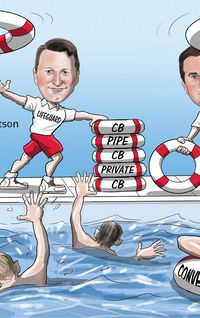Dropping anchor
When it came to Covid-19 related financings, liquidity was paramount and none were as important as Norwegian Cruise Line’s private placement, convertible bond, equity sale and high-yield bond that together raised US$2.4bn in May.
A US$400m PIPE in the form of six-year CB sold to private equity firm L Catterton was supplemented by US$460m from a public stock sale, US$862.5m from a public CB and US$675m of secured high-yield debt, with all of the public deals upsized on strong investor demand and exercise of the greenshoes.
Combined, the equity-linked raises are convertible into 137.6m shares, a whopping 39.1% stake in the cruise ship operator.
“The marching orders were to get [NCL] as much money as you possibly can by tapping every market,” said Simon Watson, Goldman Sachs’ co-head of Americas ECM. “The fact they were able to do a PIPE meant we were not cannibalising demand for the public market raises.”
Goldman, which was awarded a larger fee than the other six bookrunners, was able to pivot from the agreed PIPE to one day of marketing the equity, CB and HY concurrently on May 5.
That evening, Norwegian sold 41.8m shares at US$11 apiece, a 23.8% discount to pre-launch levels. That largely erased the 25% premium achieved on the 6% four-year convertible. The US$675m of four-year HY debt pays a 12.25% annual coupon and came at a 99 OID, the aggressive end of 12.25%–12.5% talk. The offerings were increased from the US$350m, US$650m and US$600m targeted at launch.
Norwegian shares closed the following day at US$11.72 and the year at US$25.43. The 6% CB ended the year bid at twice par value.
It was awfully expensive funding, but Norwegian had no choice but to accept the stock dilution.
“If it's about survival, there is going to be a certain amount of pain,” said a banker involved at the time. Later that week NCL was also able to renegotiate terms on some of its senior bank loans.
Norwegian was non-operational at the time with its over 59,000 berths unable to be filled through the rest of the year. Moody’s and S&P had already downgraded its credit ratings to Ba2 and BB–, respectively.
Norwegian had fully drawn down US$1.55bn on its revolving credit facilities, leaving it with just US$1.4bn of cash as of March 31 against a US$110m–$150m monthly cash burn. Its US$2.4bn raise in May would extend the liquidity sightline for at least a year and was followed by further equity raises, at higher prices, in July and November.
To see the digital version of this report, please click here
To purchase printed copies or a PDF of this report, please email gloria.balbastro@lseg.com


